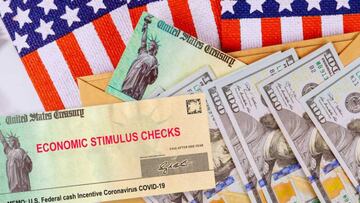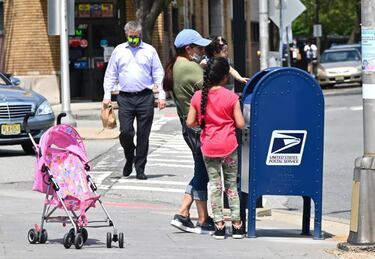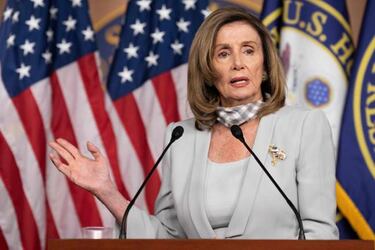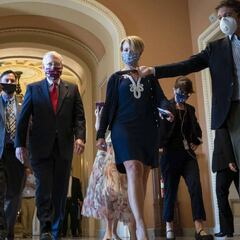Second stimulus check: how to receive it faster
We may be on hold as Republicans and Democrats decide how to agree a package but individuals around the US may get financial support quicker than before.

Around the United States people are waiting on news of what financial support they can expect and when it is likely to arrive. But is there anything that could speed that process up?
Stimulus check: a faster approach is possible
With a number of factors meaning that Americans had to wait longer than necessary for their payments - wrong addresses or bank accounts being common reasons - one way in which the government could help speed things up this time around would be to change the wording in the law.
Currently, and stated in the Expedited Funds Availability Act of 1987, funds for checks issued by the Treasury Department must be made available for the recipient to withdraw ‘not later than the business day after the business day’ from when the funds are deposited. That may not seem like a lot of time to wait, effectively just a couple of days, but add in weekends and holidays and it can hurt for those most in need.
- Second stimulus check: White House pushes 'skinny' Covid-19 stimulus bill
- Second stimulus check update: why is there no agreement?
- Democratic National Convention: schedule, speakers, how to watch
- Unemployment benefits: why $400 could be only $300?
- Stimulus check: how to track missing $500 for dependents
- How the second stimulus check will be taxed by the IRS
By changing this text to ‘immediately’ it would reduce the time the check takes to clear and potentially have a hugely beneficial impact for millions of households across the country. The Federal Reserve can make this alteration while the idea to develop a national real-time payment system was already targeted through the Payment Modernization Act of 2019. There is - or at least there was at the end of last year - opposition to this idea, with some people claiming that it could impact on banking competition. The current pandemic could force a rethink.
Although some other suggestions have been made to make payments faster for all, the best thing to do is to prepare yourself for it in whatever way you can. If you can, check the Get My Payment tool from the Inland Revenue Service. This will show you information on what you are entitled to and is a way of tracking any payment. As the IRS and the Treasury have already been through the process once, this time round should mean it is a slicker, easier one to manage, and mistakes having been learned from.
Of course, as it stands no stimulus payment has been signed into law, but there is broad agreement that it is required. We will just have to wait until the situation can be moved forward appropriately and the checks issued.
Second stimulus check: learning from experience
The good news is that when a second stimulus check is agreed upon, as part of the relief package, it will almost certainly be issued out and delivered sooner than the first round of payments, at least for the majority of people. With the rush to get the CARES Act signed off, the first round saw a number of logistical problems being faced which resulted in delays, as well as checks being sent to deceased people.
Back in June, Chad Hooper, the national president of the Professional Managers Association (PMA) which represents managers at the Internal Revenue Service, said that ”should there be subsequent rounds of stimulus, the agency could get out all of the payments more rapidly.

"Under the CARES Act program,” he continued, “the agency was able to issue direct deposits in fewer than four weeks – because of how the agency's ageing mainframe functions, it is our understanding that the most rapidly a check could be issued is roughly 2-3 weeks so I would expect to see payments issued within 4 weeks.
"Because the Treasury recently chose to issue debit cards to unbanked taxpayers or taxpayers for whom we do not have banking information, this is another population of taxpayers for whom we would have direct deposit information and will only help the agency to issue subsequent payments more rapidly."
Second check: likely payment dates
The first round of Economic Income Payments involved the set-up of most of the payment structure, something that included the creation of the Get My Payment tool. This allowed individuals to sign up for a direct deposit - the quickest means of getting a check - and also to track its movements thereafter. This time around, it is already there, is familiar to most, and has a lot more information than before. A smoother process is, almost, guaranteed.
The expectation now is that any relief package will not be agreed and signed off until September, when Congress returns from their break. That said, don’t bet your mortgage on it.

Taking the positive approach, and making the assumption that the leaders of both parties come to an agreement, the earliest you are likely to see money in your account is 23 September. For that to happen, we’d need the Senate to reconvene as planned on 8 September having already come to some sense of a deal in the meantime. The bill could then pass the Senate on 9 September and (based on our experience with the previous checks within the CARES Act) there would be a two-week lag period to the payments being made. Remember too, that this ‘happy path’ would only apply to those households where the IRS have their bank accounts, with delays to this for others.
Related stories
It's worth noting that senators will be required to make themselves available with as little as 24 hours' notice in case there a vote is called.
Live coverage of the coronavirus crisis
You can stay up to date with the latest US developments in the coronavirus crisis, including all the breaking relief package news, by following our dedicated live blog.

